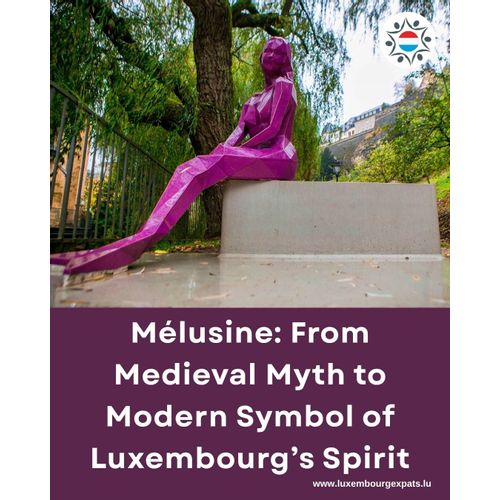Mélusine: From Medieval Myth to Modern Symbol of Luxembourg’s Spirit
LuxembourgPosted on 30 October 2025 by TeamOnce a medieval fairy from French legend, Mélusine has become one of Luxembourg’s most iconic figures — a blend of myth, mystery, and modern identity.
Every seven years, legend says, Mélusine reappears by the Alzette River — half-woman, half-serpent — where she now stands immortalized in bronze near the Bock Rock. Her story, once told only in noble courts, has evolved into a national symbol that continues to inspire art, culture, and even technology in Luxembourg.
The legend’s roots trace back to Jean d’Arras’ 1393 novel “Mélusine ou la noble histoire de Lusignan”, where Mélusine falls in love with a mortal nobleman — only for her secret to be revealed when he spies on her. Over centuries, the tale transformed: demonized in the 17th century, romanticized in the 19th, and reimagined today as a symbol of female independence and strength.
In Luxembourg, Mélusine was reintroduced in the 1800s as part of the national identity narrative, paired with the knight Sigefroi — the symbolic “founders” of the nation. Today, her image transcends legend: from the Melusina nightclub and Serge Ecker’s 2015 riverside sculpture to the state-of-the-art MeluXina supercomputer in Bissen.
For historian Sonja Kmec of the University of Luxembourg, Mélusine represents more than folklore. “She decided to show herself as she truly is — a timeless act of empowerment,” Kmec explains, viewing the myth as an early emblem of feminist identity.
From a fairy of the Middle Ages to a digital-age muse, Mélusine continues to evolve with the times — a reminder that even legends can find new life in modern Luxembourg.
Join the community of your own - #1 home-grown LuxExpats app
SignUp Free : luxembourgexpats.lu
I am your contact
Team
Chat









